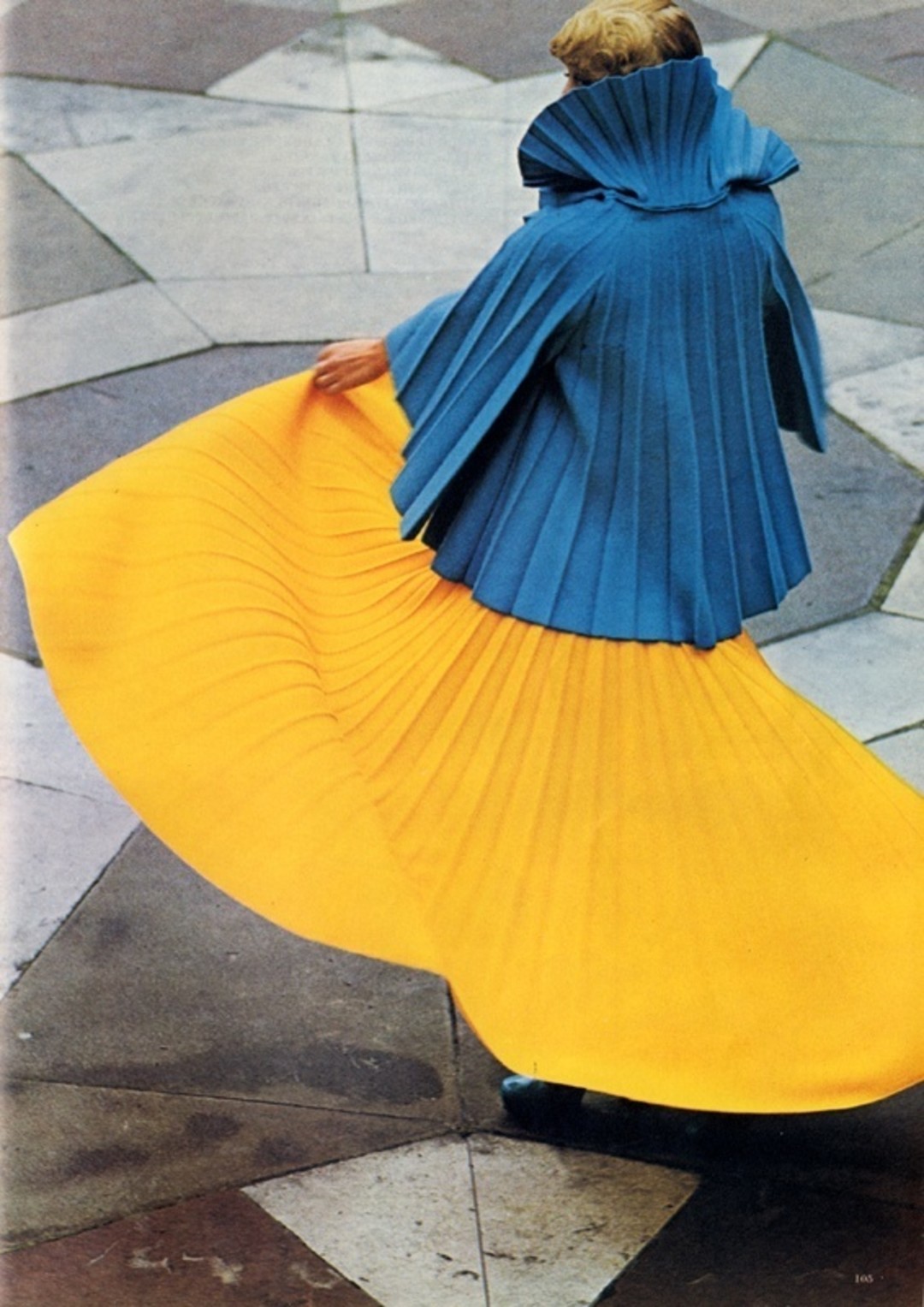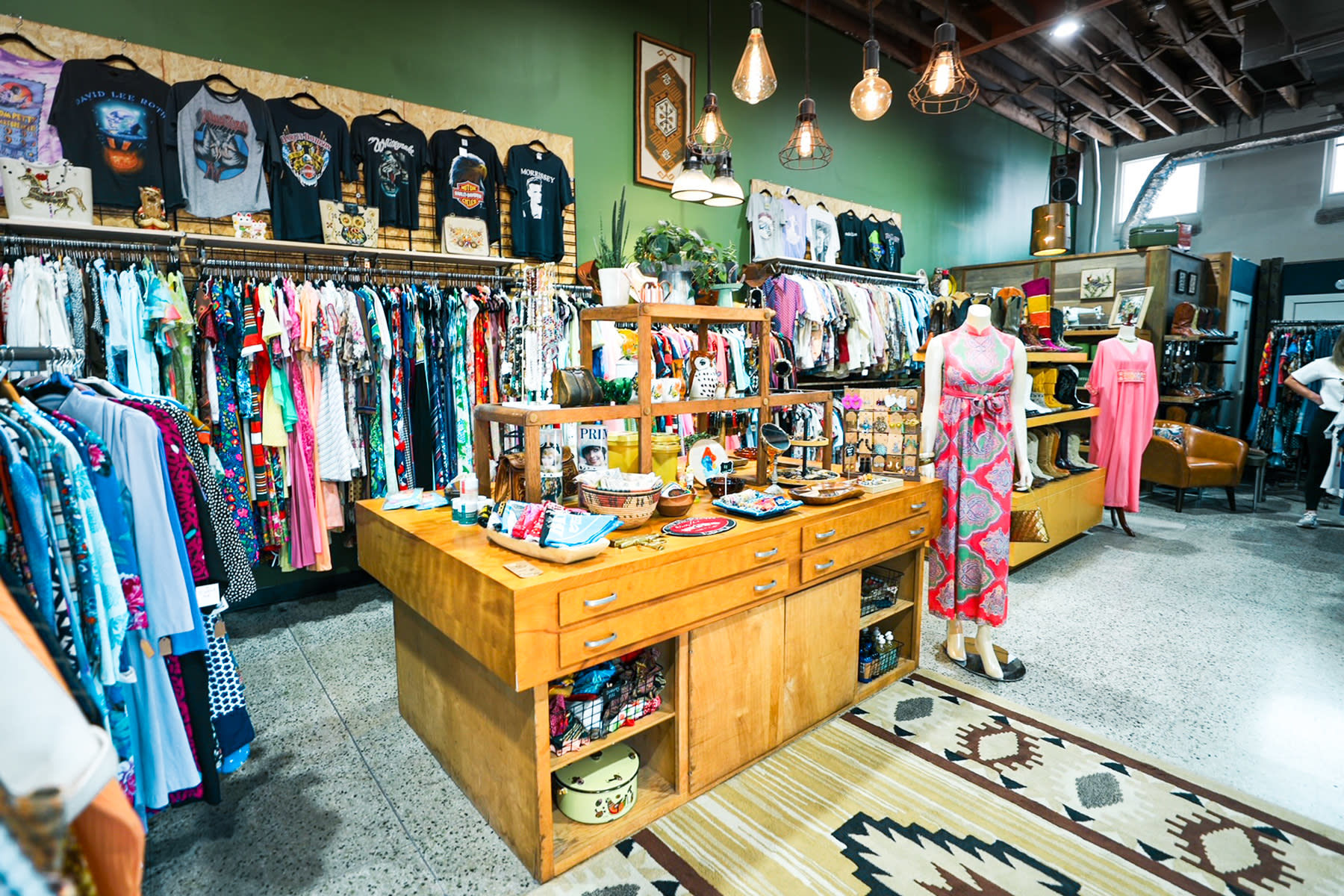Thrifting Tips From Vintage Expert Heather Petrey
Hand-finished seams, locally sourced materials, and intricate details overseen by one single human—this may sound like the latest in Brooklyn-hipster retail, but I’m talking about what our grandparents used to wear.
Aside from the environmental, ethical, and style benefits of vintage clothing, there's the issue of quality. What was once produced in the US or Europe by a tailor, a family member, or a small group of highly skilled seamstresses is now made in a huge factory, churned out by the ton, and sold cheaply to you at a big retailer. As a result, the production process, materials, and craftsmanship are staggeringly different than garments produced before the 1980s, when manufacturing was moved overseas.

Harpers and Queen, September 1972. Sally Tuffin clothing photographed by James Wedge.
That said, when it comes to buying vintage items a little knowledge goes a long way. What can be a treasure trove of magical clothing from eras past is also a garbage dump for outdated, damaged, or just plan hideous demon beasts summoned from a time long before.
Long-time vintage clothing collector/historian, stylist, and owner of Lone Star Vintage, Heather Petrey, gives Houstonia tips for sorting through the racks.

Local vintage expert Heather Petrey.
1. Make like Macklemore.
Petrey loves higher-end stores like Cheeky Vintage and mid-range vintage shops like Retropolis and Replay, but maintains that there can be some great finds at The Salvation Army or Sandollar. Whether you’re at a bonafide vintage shop or a thrift center, if you’re willing to dig you might strike gold.
2. Stay away from polyester.
Check the materials—do they feel heavy and durable? Is it made in Europe or the US and not in China? The key to finding quality pieces lies in the materials—you want natural fibers like wool, silk or cotton. Unless you’re going for a 1960s or 1970s gem, steer clear of man-made materials.
3. Make sure the zipper zips and it has all its buttons.
If it has a flaw, make sure it’s fixable before walking out of the store. Moth holes, stains, a jacked-up zipper, and missing parts—all of these can be dealbreakers. Check the seams too—if your new favorite blouse can be torn in two with one raise of the arm, it’s not a good investment.
4. If something makes your heart flutter, don’t pass it up.
Many finds are one of a kind—don’t walk away from something you absolutely love. It may not be there tomorrow!




